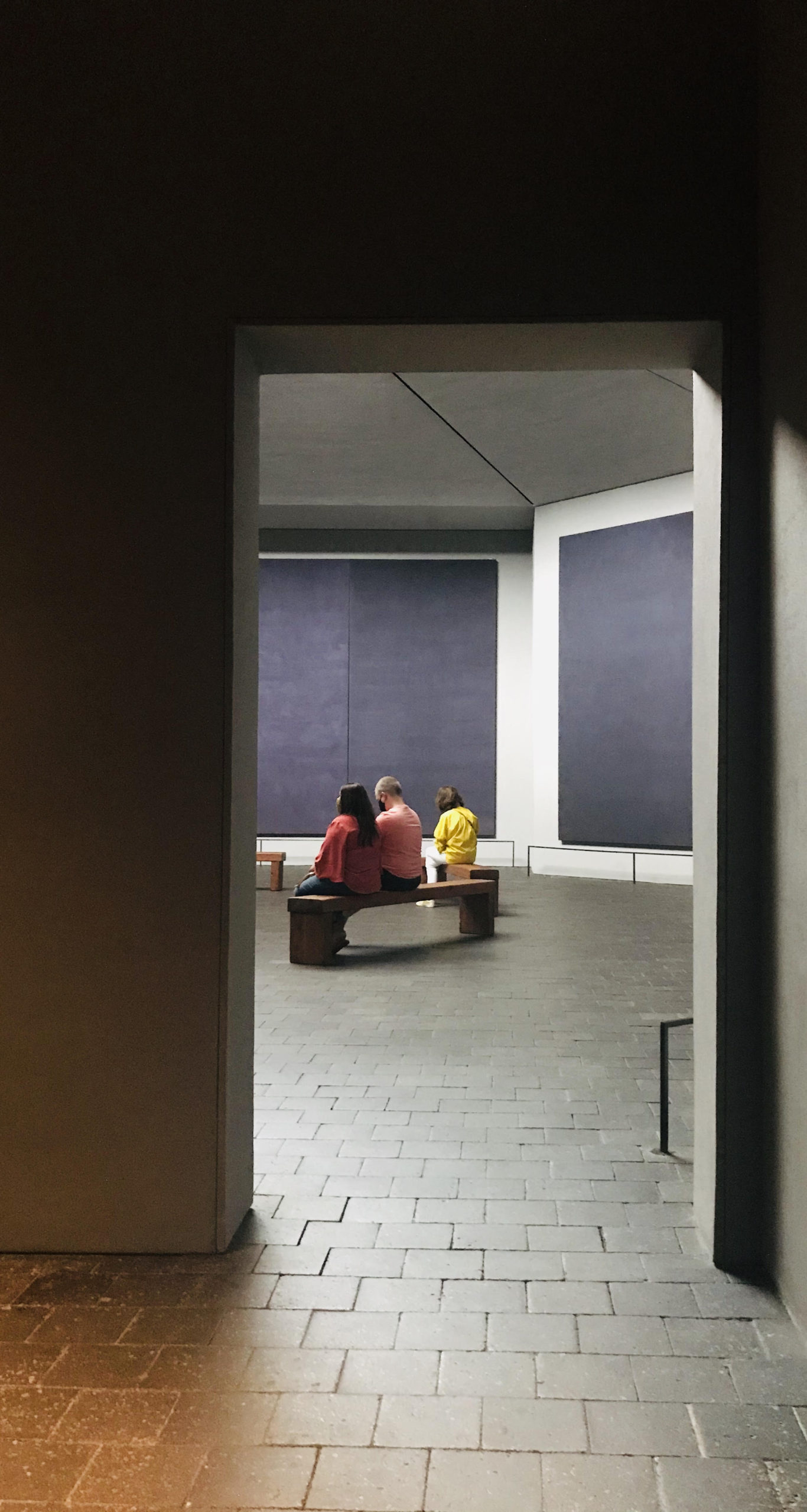
Russian-born artist Mark Rothko is considered one of the most important painters in the 20th century. He was a leading figure in the Abstract Expressionist and Color Field movements of the 1950s and ‘60s. Interestingly, Rothko steadfastly rejected these labels. In 1964 Rothko was commissioned by John and Dominique de Menil to develop a sacred space in Houston.
The couple was inspired after traveling to France, visiting Le Corbusier’s Chapel of Ronchamp, and seeing the work of Henry Matisse and Fernand Leger in various churches. The couple was taken by the transformative potential of art when artists were given free reign and became deeply involved in the global ecumenical movement to bring modern art and architecture into places of worship. Their vision for the chapel was to provide a safe place for dialogue, prayer and worship while maintaining a permanent collection of spiritual texts.
The Rothko Chapel, completed in 1971, perhaps has already realized the Menils’ vision. The chapel reportedly attracts more than 100,000 visitors each year from around the world. It has been a center for international colloquiums and meetings to foster truth, justice and freedom. For the chapel’s twentieth anniversary it partnered with former President Jimmy Carter and his Human Rights Foundation to give out a joint Rothko Chapel award. Nelson Mandela was the keynote speaker at the event. In September 2000 the chapel was placed on the National Register of Historic Places. The Menil art patronage extends beyond the Rothko Chapel and includes the acclaimed Menil Collection and Cy Twombly Gallery — all located within walking distance of the chapel.
After two years of exploration in his NYC studio, Rothko completed the 14 black tonal paintings that hang in the chapel. The commission appeared to weigh heavy on the artist. The following is a portion of the letter Rothko penned to the Menils, sent the same year he completed the work: “The magnitude, on every level of experience and meaning, of the task in which you have involved me, exceeds all of my preconceptions. And it is teaching me to extend myself beyond what I thought was possible for me.” Rothko had substantial control over the design of the chapel and clashed with Philip Johnson, the first of three architects hired to work on the project. Sadly, Rothko committed suicide in 1970, one year before his work was installed in the chapel.
I admire Rothko’s work a great deal. However, knowing the tragic back story and experiencing the works that inspired the Menils pursuit, I find the space disheartening. It is essentially a requiem for a tortured artist, struggling with his mental health. I have visited the chapel on numerous occasions but can only stay in the space for short periods of time — a missed opportunity.

well David….I also have visited the ROTHKO chapel many times; as I once lived within walking distance….I was a loop lizard in Houston during the late 80’s…I never knew the story about the suicide however (until now)….so I will probably have a different perspective next time for sure….I suspect that I will continue to visit the chapel with a meditative mindsight however…there is nothing wrong with a REQUIEM as composers have been creating them for centuries and they are typically gorgeous musical works of art…DURUFLE’S REQUIEM being amongst my favorites…it is haunting that great artists of all categories are often dealing with mental illness….your article reminds me that I used to hang out around Taliesin East when I was very young in the late 60′ and early 70’s…it wasn’t until many years later that I realized there was a chapel across the road…It was FLLW’s first work of architecture (I later found out) and it was a Unitariam Church primarily for his family…he was still a teenager….and near the chapel is a small cemetery where Frank was originally buried….his wife had him exhumed eventually and moved to Scottsdale and Taliesin West….that of course affected my perspective on Taliesin East when I visit now